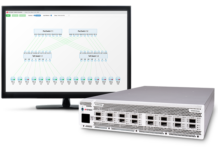The banking and financial services industry is extremely vulnerable to cyberattacks, breaches, and data misuse. With thousands of hackers constantly prying to infiltrate banking networks, maintaining the necessary levels of security and privacy is extremely important. However, in today’s technologically advanced era, traditional approaches to anomaly detection and fraud prevention like heuristics are incompetent.
Learn how deep learning acts as a valuable tool for banks to detect and prevent fraud.
The Banking Industry Outlook: A Security Perspective
In November 2023, the US arm of the Industrial and Commercial Bank of China (ICBC) was hit with a lethal ransomware attack that disrupted the US Treasury market. This attack is just one of the thousands that happen every year in the banking industry. Banks and financial institutions that fall victim to such attacks can face significant short- and long-term damages. From operational disruptions to reputational harm, breach of trust, legal and regulatory consequences, and more.
According to the Cost of a Data Breach Report, the global average cost of a data breach in 2023 was $4.45 million. While 51% of organizations plan to increase security investments because of a breach, most point solutions fail to deal with the volume and scale of modern-day attacks. The same report showcases that organizations that rely on artificial intelligence and machine learning tools tend to enjoy an average savings of $1.76 million.
Deep Learning for Threat Detection and Prevention
In a world that’s becoming more and more digitally advanced, fraud has taken on new dimensions. Banks are especially vulnerable to attacks, given the nature of transactions, the type of data, and the volume of accounts. To stay one step ahead of fraudsters, artificial intelligence, and deep learning techniques pave the way for intelligent anomaly detection.
Acting as a first line of defense, deep learning models can identify data points that deviate from expected patterns in a dataset. By constantly monitoring real-time transaction data, they can uncover unusual or rare events that could point to a possible fraud opportunity.
Unlike heuristic rule-based systems that are static, deep learning models adapt to constantly evolving fraud patterns, often supported by emerging technology. Since they constantly learn from the data they are fed, they can easily spot behaviors and characteristics commonly associated with fraud.
From detecting unusually high transaction amounts to purchases from unusual locations, and peculiar time intervals between transactions, deep learning algorithms can discern context from numerous parameters and accurately identify fraudulent transactions. Here’s how banks can use deep learning to thwart a range of modern-day banking attacks:
- Credit card fraud: Average credit card balances topped $6,000 in 2023, the highest in 10 years. With over 1.25 billion credit card holders globally, the threat surface is constantly expanding. Deep learning models can help banks analyze credit card transaction data and identify fraudulent operations. For example, banks can leverage models to identify unusually large transactions or transactions that are initiated from unfamiliar locations.
- Account takeover: Protecting banking user accounts from account takeover fraud is becoming increasingly complex, with hackers relying on a range of sophisticated tools. Deep learning algorithms can detect links between different data points to uncover complex anomalous patterns that heuristic rules might not find. By acting on up-to-date data, these models can adapt swiftly to changes in attack vectors and network traffic and prevent unlawful takeovers.
- Malware and phishing: In 2023, over 40 banks across the world fell victim to a major malware campaign that resulted in the theft of credentials from over 50,000 users. Banking organizations can rely on deep learning models to continuously monitor devices, apps, and transactions to spot malicious code, sudden privilege escalations, or even changes in system usage.
- Identity theft: Identity theft is terrorizing the banking sector, causing humongous losses from business disruptions, penalties, and legal expenses. Supervised and unsupervised deep learning models can identify anomalies not visible with heuristic fraud detection techniques while supplementing them with data for discovering new patterns. With hundreds of insurance claims being processed, thousands of new customers being onboarded, and millions of debit card and credit card transactions taking place, these models can allow anti-fraud personnel to understand where weaknesses exist.
- Money laundering: Money laundering poses a grave threat to the effective functioning of banks and the stability of the financial system. According to a report by The United Nations, the estimated cost of global money laundering annually is between $800 billion – $2 trillion, making up 2-5% of the global GDP. Since money laundering can tarnish a bank’s reputation, weaken customer relationships, and even threaten its very survival, banks can leverage deep learning to extract patterns that are historically associated with suspicious activity. By automating pattern identification, banks can eliminate the manual effort of sifting through data and enable more precise and effective screening.
Hackers are always on the lookout for loopholes in banking networks. With the far-reaching consequences of attacks, banks of all sizes must be more vigilant than ever to prevent fraud. Artificial Intelligence and machine learning techniques offer a great way to fight against the slew of attacks. They help streamline and automate the process of detecting unusual transactions, helping banks quickly identify suspicious activity and help thwart attacks.















